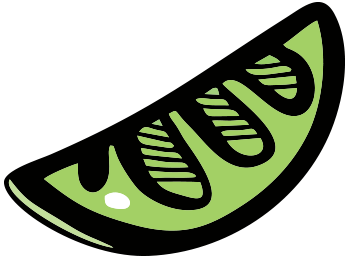Brittle bones needn’t be a fact of life
October 19, 2012
World Osteoporosis Day – 20 October
It’s a fact – 1 in 2 women and 1 in 3 men over 60 years will have an osteoporotic fracture in Australia.
According to Osteoporosis Australia, every 5-6 minutes, someone is admitted to an Australian hospital with an osteoporotic fracture which is expected to rise to every 3-4 minutes by the year 2021.
Osteoporosis is the silent epidemic that affects such significant numbers in our community and yet many are not aware that by simply getting more active, we can reduce the risks.
Anita Hobson-Powell, Executive Officer of Exercise & Sports Science Australia says research shows that bones and muscles are intricately linked and they work together to achieve the motion required in everyday lives.
“That’s the difference between what a cheetah can achieve as opposed to a caterpillar which doesn’t have the skeleton to convert muscle power to directional motion. One without the other is useless,” said Anita Hobson-Powell, Executive Officer of Exercise & Sports Science Australia (ESSA).
“As our muscles get bigger and more powerful, our bones also get heavier and stronger so they are not overpowered. This is good news as while many think strengthening your bones is only about diet, they are not aware that you can also strengthen your bones by doing more exercise.”
“We hear incredible success stories from our accredited exercise physiologists across Australia about how clients have managed to significantly improve bone strength and density thanks to a consistent exercise program. Exercise is the medicine Australians should be getting a good dose of to ward off the impacts of osteoporosis.”
Associate Professor Belinda Beck from Griffith University says lifelong exercise is especially important in the prevention of osteoporosis, however, exercise recommendations differ according to existing skeletal strength.
Children and healthy adults should perform high impact activities such as jumping, plyometrics and skipping to stimulate their bones while walking, swimming and cycling are ineffective. For older, frail individuals with osteoporosis (low bone mass or previous low trauma fracture) however, high impact activities should be avoided as they increase the risk of fracture. Instead, muscle strengthening and balance training are critical strategies to prevent the falls that cause most osteoporotic fractures in the elderly.”
“Exercise is an integral part of developing healthy bones and if you feel you’re not in the right shape to start exercising alone, ask your GP for a referral to your local Exercise Physiologist to get help with getting you started in a manageable and safe way,” said Ms Hobson-Powell.
To find a local accredited Exercise Physiologist please visit the Exercise & Sports Science Australia website at www.essa.org.au and enter your suburb or postcode.
Top Tips for getting active
1. Always take the stairs, avoid escalators and lifts.
2. Roll up your sleeves and get into the garden for a few hours a week.
3. Find yourself a buddy so you can keep each other motivated and have regular exercise times and days.
4. Go for a stroll around the neighbourhood after dinner.
5. Dance… see you’re already smiling at the idea! Turn up the tunes in your lounge Wash your car, it’s a double win – a nice clean car but a good work out!
6. Invest in a pedometer and set yourself a target for every day.
7. Take the furthest parking space rather than the closest.
8. Wash the car or spring clean a room and get a great workout!
9. Go swimming, summer is just around the corner.
10. Join a local walking group, tai chi class or yoga group.
Ends.
For further media information, please contact Maya from Fresh PR & Marketing on 0410 109 102 or email maya@freshprm.com.au.
ABOUT ESSA
Exercise & Sports Science Australia (ESSA) is the peak professional body for exercise and sports science in Australia, and provides national leadership and advocacy on key issues. ESSA supports its 3,500+ members and the community by fostering excellence in professional practice, education, training and research.
Website: www.essa.org.au
ABOUT EXERCISE IS MEDICINE®
Exercise is Medicine®, as an initiative of Exercise & Sports Science Australia (ESSA), aims to make physical activity and exercise a standard part of a disease prevention and treatment paradigm in Australia, improving community health and reducing long-term health care costs. The program hopes to make every Australian doctor consider physical activity and exercise as a standard part of treatment programs, resulting in more prescribed exercise for the prevention or treatment of chronic conditions.
The three guiding principles of Exercise is Medicine® Australia are designed to improve the health and well being of all Australians through regular physical activity prescription from doctors and other allied health providers. The guiding principles include:
· Physical activity and exercise are important to health, and to the prevention and treatment of many chronic diseases;
· More should be done to address physical activity and exercise in health care settings; and
· Doctors should support the referral of patients to appropriately trained allied health professionals to deliver exercise treatment services.
Official Media Spokesperson for this release:
Associate Professor Belinda Beck
School of Rehabilitation Sciences, Griffith University
b.beck@griffith.edu.au
Tel: (07) 555 28793
Anita Hobson-Powell
Executive Officer
Exercise & Sports Science Australia (ESSA)
327 Sandgate Road Albion QLD 41010
E: Anita.Hobson-Powell@essa.org.au
P: 07 3862 4122 M: 0400 519 800
[nggallery id=51]


